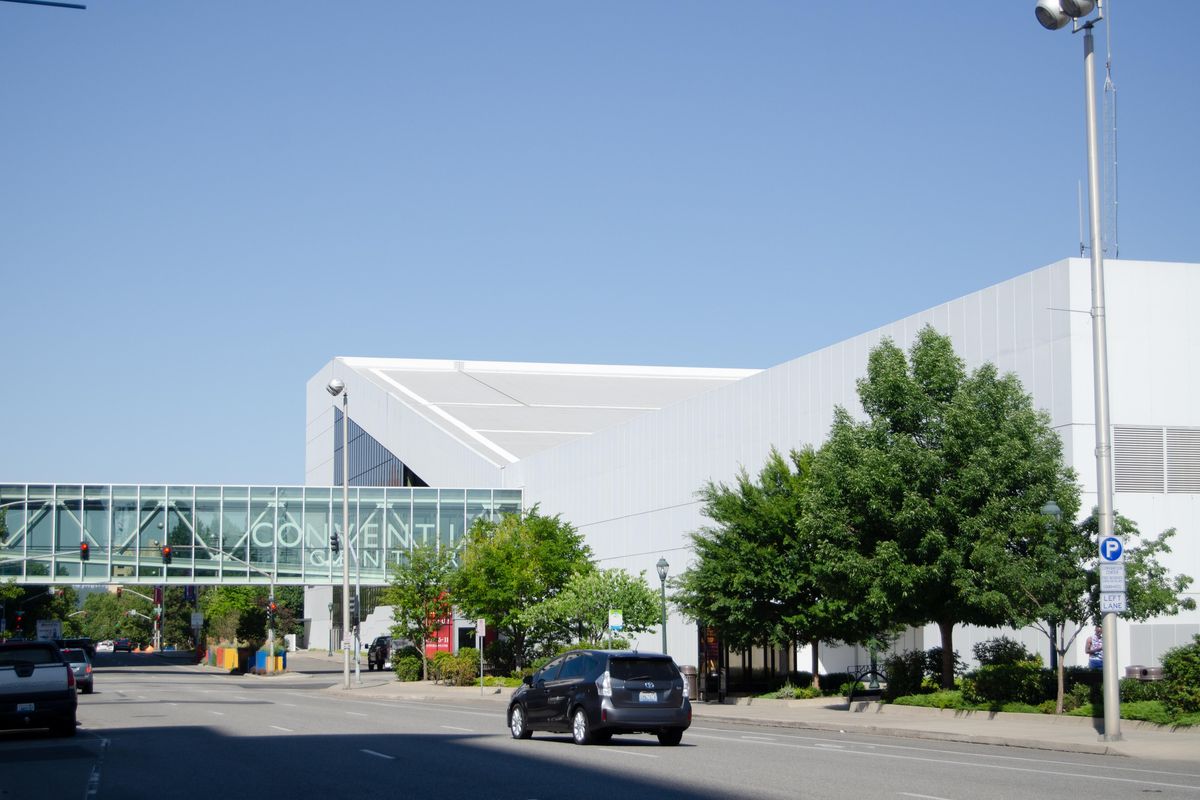Then and Now: The Milwaukee Road freight office

The Milwaukee Road, the colloquial name for the Chicago, Milwaukee, St. Paul and Pacific Railroad Co., was founded in 1847 in Wisconsin as the Milwaukee and Waukesha Railroad. The Milwaukee management wanted to push development through the Northwest to Seattle, and preliminary surveys estimated the cost would be $45 million. The push began in 1905 and Spokane was connected to Seattle in 1909, making the Milwaukee the third transcontinental railroad to connect through Spokane.
Thousands of people used the new rail connection to get to the 1909 Alaska-Yukon-Pacific Exposition in Seattle. In the pre-automobile era, travel was becoming easier and more convenient for passengers.
The Milwaukee planned to electrify some of their mountain routes in the West because extreme winter temperatures made generating enough steam power difficult. Using hydropower from mountain dams and copper wire mined in Anaconda, Montana, electric engines began traveling between Harlowton, Montana, and Avery, Idaho, in 1914. The Northwest extension and the electrification project eventually cost the railroad $257 million, and subsequent traffic never met projections. The company’s first bankruptcy was in 1928. The Milwaukee’s total track miles numbered 11,248 in 1929. During the Great Depression, the railroad declared bankruptcy again in 1935.
The company only completed one other electrified segment, from Othello to Tacoma, and eventually new diesel engines ended the project.
The Milwaukee operated many prominent passenger routes over the years, including The City of Los Angeles, The City of San Francisco and the Challenger. Throughout the early 20th century, railroads jockeyed for primacy over routes, higher freight rates and coveted approvals from federal and state commissions. The Milwaukee sought bankruptcy protections during the Depression because of its debt.
Through the 1950s and ’60s, railroads declined in importance with the rise of long haul trucking, buses, airlines and automobiles. The debt load and shrinking rail use prompted a third and final bankruptcy in 1977. In 1980, the railroad abandoned its Northwest extension completely and reorganized the Midwest section as the Soo Line. Some of the abandoned routes became trails, including the Trail of the Hiawatha and the John Wayne Pioneer Trail.
This piece originally ran Sept. 14, 2015. Writer Jesse Tinsley is on vacation and new “Then and Now”s will resume Sept. 2.